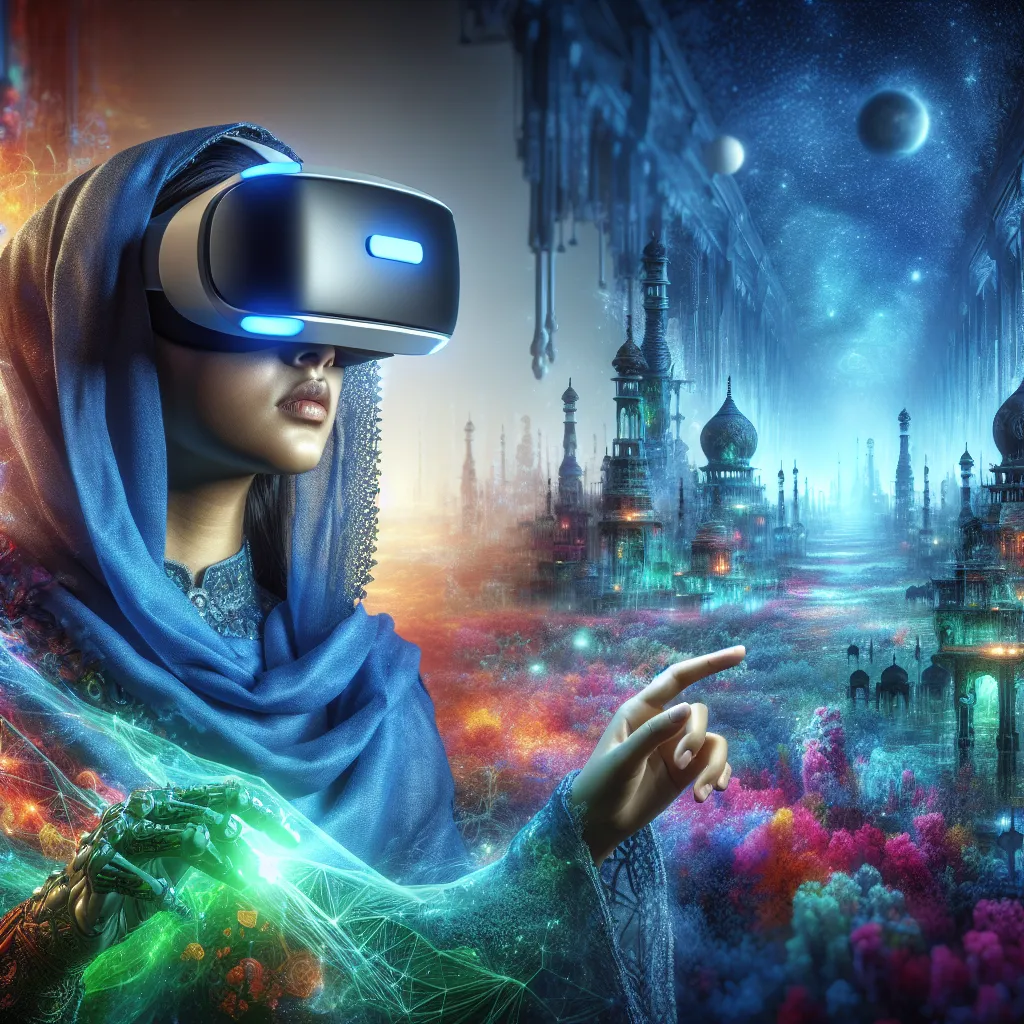The Evolution of Virtual Reality: From Past to Present
Virtual reality (VR) has undergone a remarkable evolution from its early beginnings to the immersive experiences of today. Dating back to the late 1950s, the concept of VR has steadily progressed alongside technological advancements. Early VR iterations were characterized by basic sensorial stimulations, while modern VR has advanced to encompass highly immersive and interactive experiences.
The birth of modern VR can be traced to the 2010s, when significant strides were made in display technology, motion tracking, and content development. This led to the emergence of consumer VR headsets such as the Oculus Rift, HTC Vive, and PlayStation VR, which revolutionized the way people perceive and interact with virtual environments.
With ongoing research and development, the future of VR holds even greater promise. Advancements in haptic feedback, eye-tracking, and foveated rendering are poised to further enhance immersion and realism in virtual experiences. Additionally, the integration of AI and machine learning is expected to personalize virtual environments, making them more responsive to users’ actions and preferences.
In conclusion, the evolution of VR from its modest origins to the expansive immersive experiences of today reflects a monumental technological journey. As VR continues to evolve, it is certain to redefine the boundaries of human experience in the digital realm.
Cutting-Edge Technology: Advancements in Immersive Virtual Reality
Virtual reality (VR) technology has made significant advancements in recent years, offering increasingly immersive experiences that blur the line between the digital and physical worlds. One of the key factors driving this progress is the development of cutting-edge technologies that are enhancing the capabilities of immersive VR systems.
Advancements in display technologies have played a crucial role in creating more realistic and immersive VR experiences. High-resolution displays with high refresh rates are enabling more detailed and fluid visuals, reducing motion sickness, and enhancing the feeling of presence within virtual environments. Additionally, advancements in eye-tracking technology are allowing for more natural and intuitive interactions within VR experiences, as systems can now accurately track users’ eye movements and adjust the visuals in real-time to match their gaze, further increasing the sense of immersion.
Another area of significant advancement is in the development of more sophisticated haptic feedback systems. These technologies are enabling users to not only see and hear the virtual world but also feel it. Advanced haptic feedback gloves, bodysuits, and controllers are being developed to provide users with a sense of touch and presence within virtual environments, whether it’s feeling the texture of virtual objects or experiencing the impact of virtual interactions. These advancements are crucial in creating truly immersive and multi-sensory virtual experiences.
Furthermore, innovations in positional tracking and room-scale VR are expanding the physical space available for users to interact within virtual environments. With the introduction of inside-out tracking systems and standalone VR headsets, users are no longer confined to a stationary position, allowing for more freedom of movement and interaction within VR spaces. This development is particularly significant for applications in fields such as education, training, and gaming, where physical movement and interaction are essential components of the experience.
As technology continues to evolve, the boundaries of immersive virtual reality experiences are being pushed further, offering users an increasingly realistic and engaging digital world to explore. With ongoing advancements in display, haptic feedback, tracking, and interaction technologies, the future of VR holds the promise of even more captivating and immersive experiences, opening up new possibilities across various industries and transforming the way we interact with digital content.
The Impact of Virtual Reality on Industries and Everyday Life
Virtual reality (VR) has been making significant strides in recent years, and its impact on various industries and everyday life is becoming increasingly apparent. The use of VR technology has extended beyond the realm of entertainment and gaming, finding applications in fields such as healthcare, education, tourism, and real estate, among others.
In the healthcare sector, VR has proven to be a valuable tool for training medical professionals, allowing them to simulate complex surgical procedures and gain hands-on experience in a safe and controlled environment. Additionally, VR has been utilized for patient therapy, helping individuals manage pain, anxiety, and phobias through immersive experiences.
Within the realm of education, VR has the potential to revolutionize traditional learning methods by offering students the opportunity to engage in virtual field trips, interactive historical reenactments, and immersive science simulations. This fosters a more engaging and impactful learning experience, transcending the limitations of traditional classroom settings.
Furthermore, the impact of VR on the tourism and real estate industries cannot be overlooked. Virtual tours enable prospective travelers to explore destinations and accommodations from the comfort of their homes, influencing their decision-making process. Similarly, real estate agencies leverage VR to offer virtual property viewings, allowing potential buyers to experience homes in a realistic and immersive manner.
Beyond specific industries, VR is also making waves in everyday life, enhancing entertainment experiences, and even transforming social interactions. The proliferation of VR headsets and applications has opened up new possibilities for immersive gaming, interactive storytelling, and virtual social gatherings, redefining the way people entertain themselves and connect with others.
As VR technology continues to advance, its impact on industries and everyday life will undoubtedly expand, presenting new opportunities and challenges. The ongoing exploration of immersive experiences through VR holds the potential to reshape various facets of modern society, offering innovative solutions and redefining the way people interact with the world around them.



